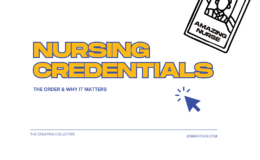The Article: Lehto, R. (2011). Identifying primary concerns in patients newly diagnosed with lung cancer. Oncology Nursing Forum, 38(4): 440-447.
Big Idea: This exploratory study used the conceptual content cognitive map (3CM) to examine the concerns of patients diagnosed with early-stage (I and II) lung cancer before surgery and then again post-surgery at a midwestern U.S. Veterans Affairs hospital. It also researched the variables lessening cancer-related worry.
Survey Says!: Patients generally reported “moderate” levels of worry, which decreased over time and were lesser postoperatively. Lehto identified seven negative and five positive domains according to earl-stage lung cancer survivors.
Quotable: “Although psychological distress and the need to screen for its occurrence is well recognized [references], targeting the distress source gives care providers an opportunity to potentially modify or resolve the concerns that underlie the distress” (p. 440).
“Although research shows that patients treated for lung cancer are vulnerable and report higher illness burden, lower quality of life, and higher psychological distress compared to survivors of other cancers, much of the research that has been conducted has focused on patients with advanced disease with expected terminal outcomes [references]” (p. 441).
“The procedure [3CM] involves asking participants to think about and write down the important concepts related to a particular subject matter and then having them organize the items in a way that is meaningful to them” (p. 442).
So What?: Distress in lung cancer survivors – albeit mostly in late stage survivors – is well documented. Increased distress is often due to poor prognosis, uncertainty, and stigma considering lung cancer is mostly associated with smoking. Distress is seen as a lasting effect throughout lung cancer survivorship, so it is important for healthcare professionals to assess and treat the causes of the distress no matter the cancer stage. Cognitive mapping may provide appropriate reflection time for patients to identify the causes of their individual distress as well as the factors that decrease those concerns, including the care environment and empathetic healthcare professionals.





